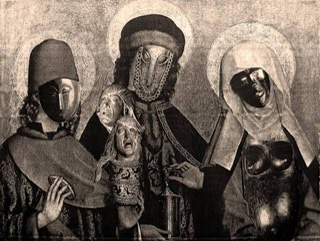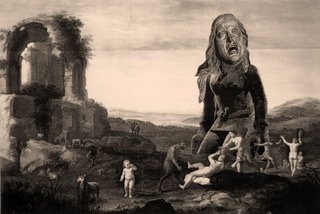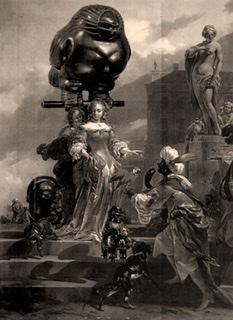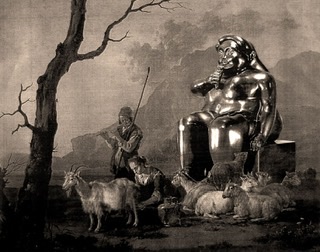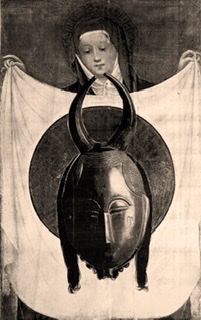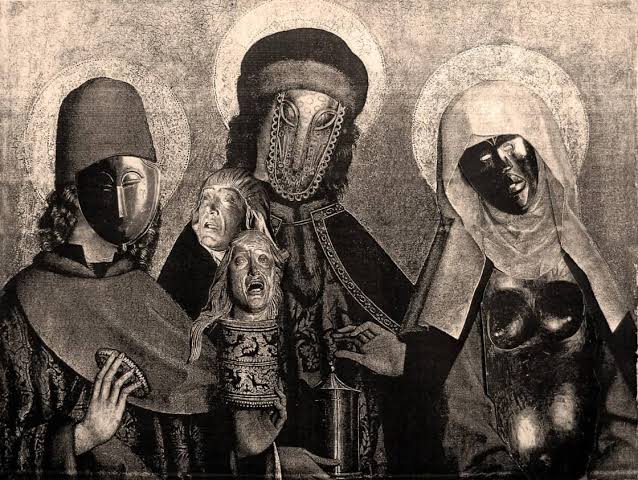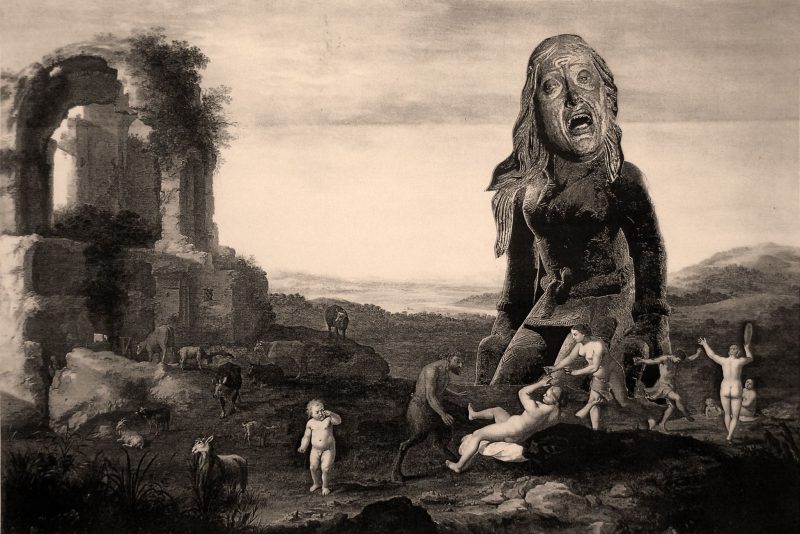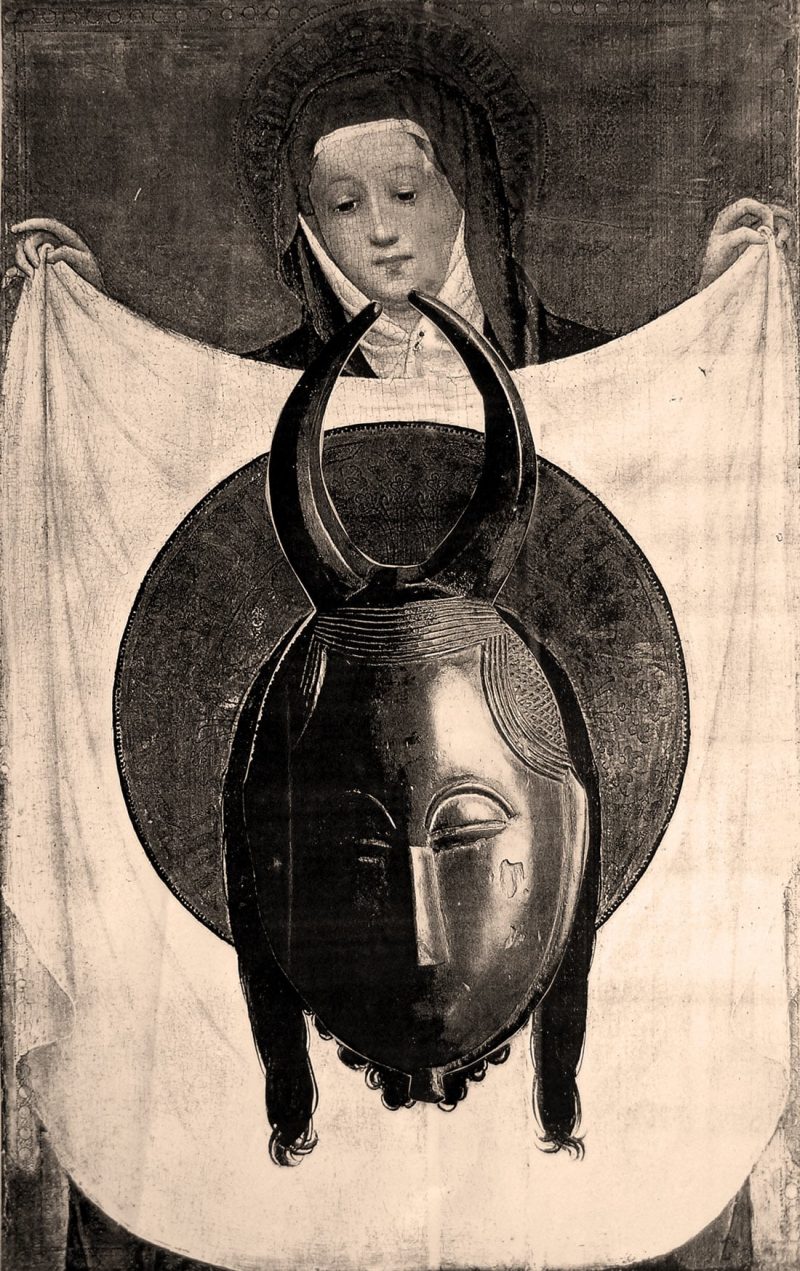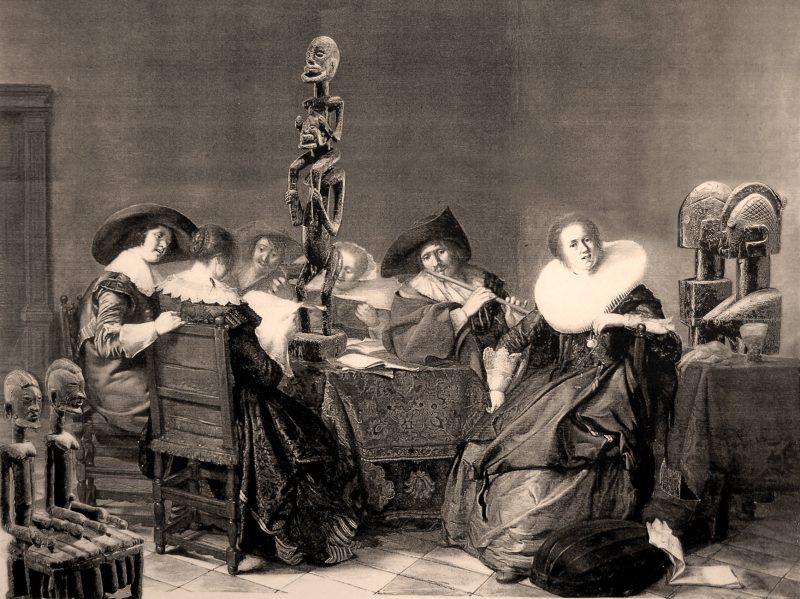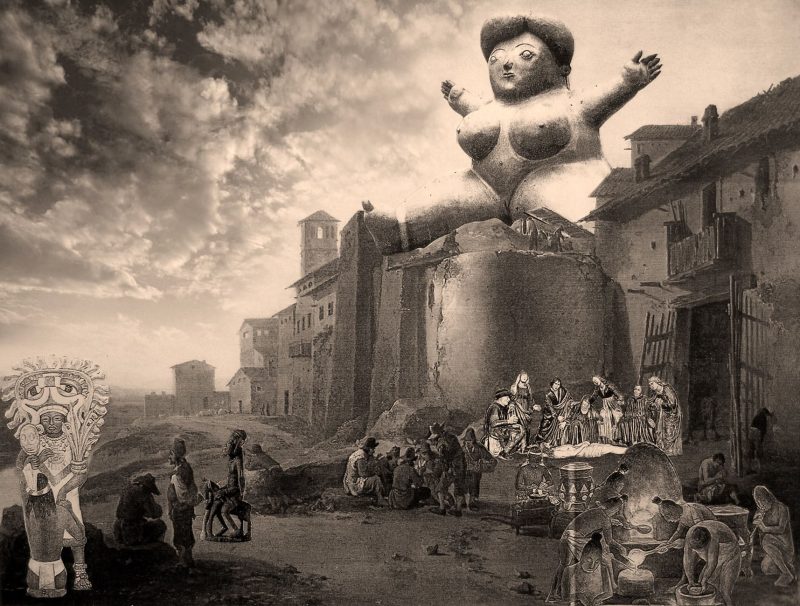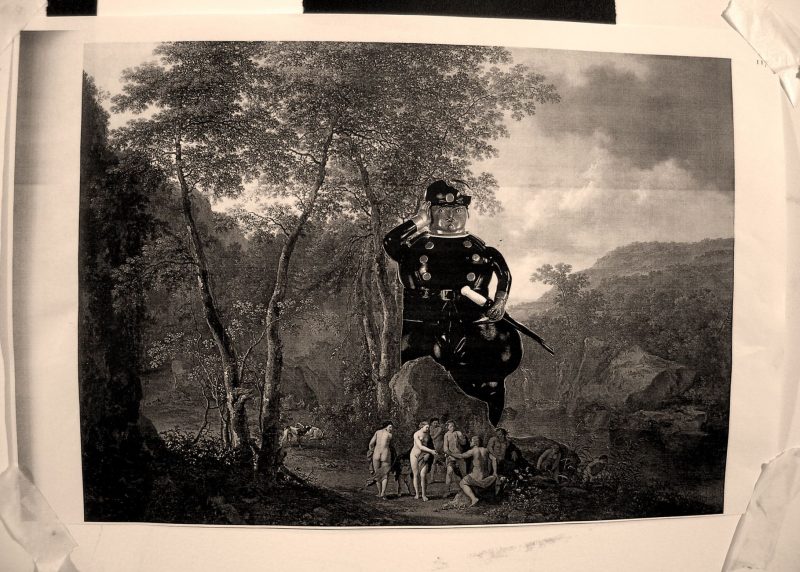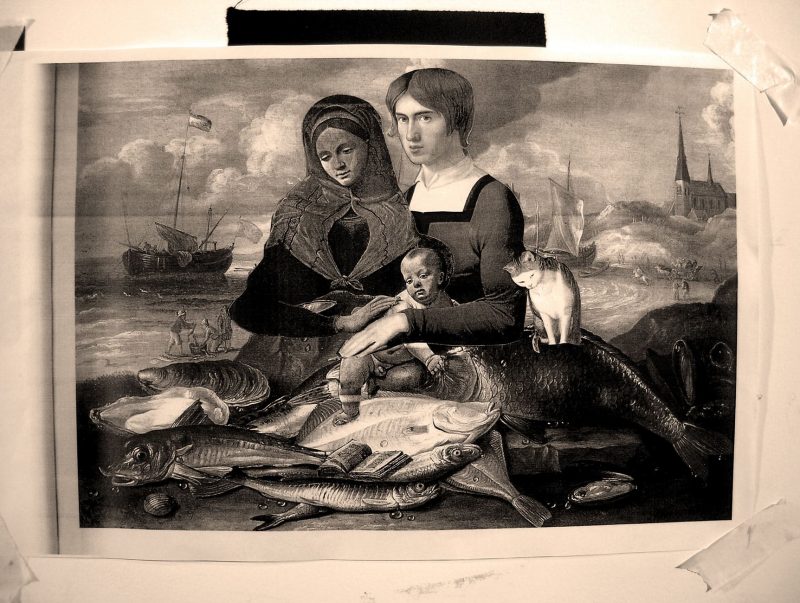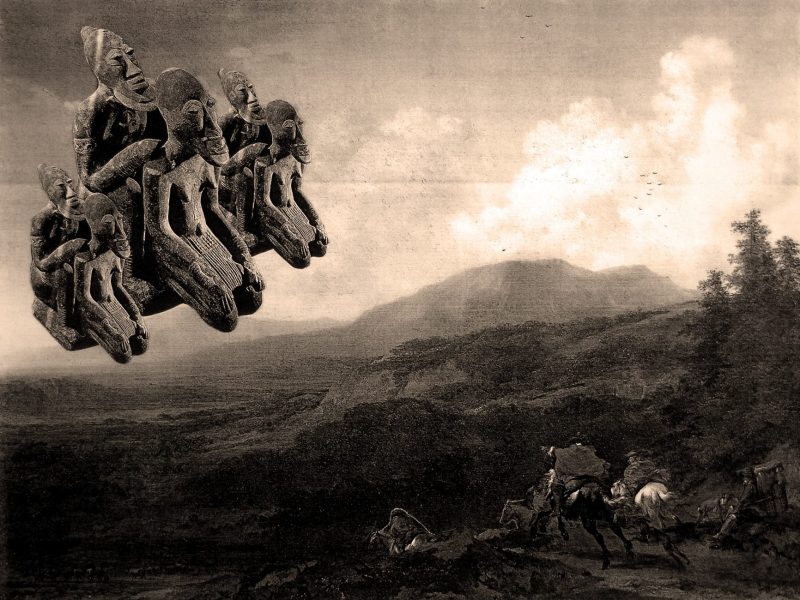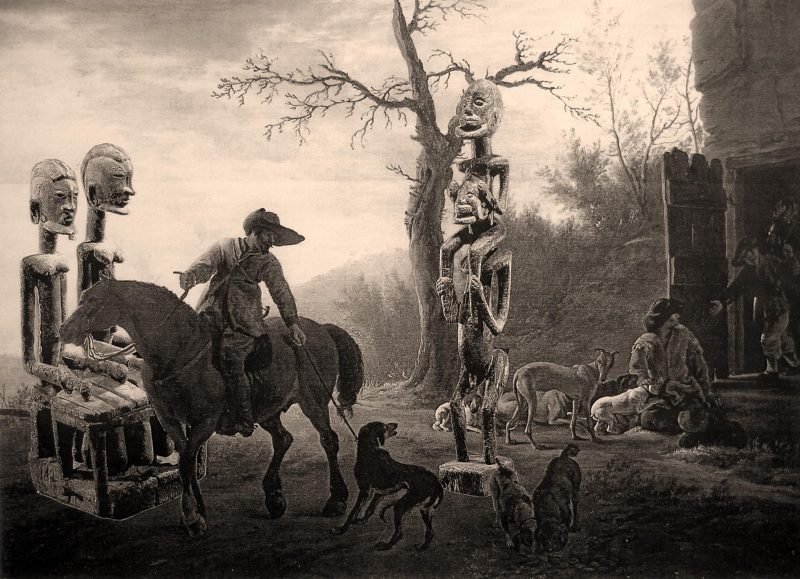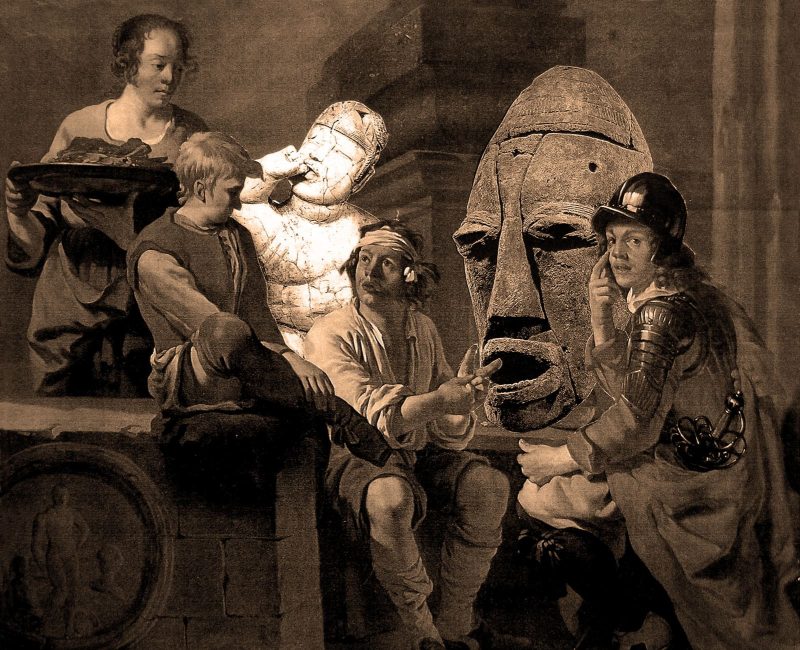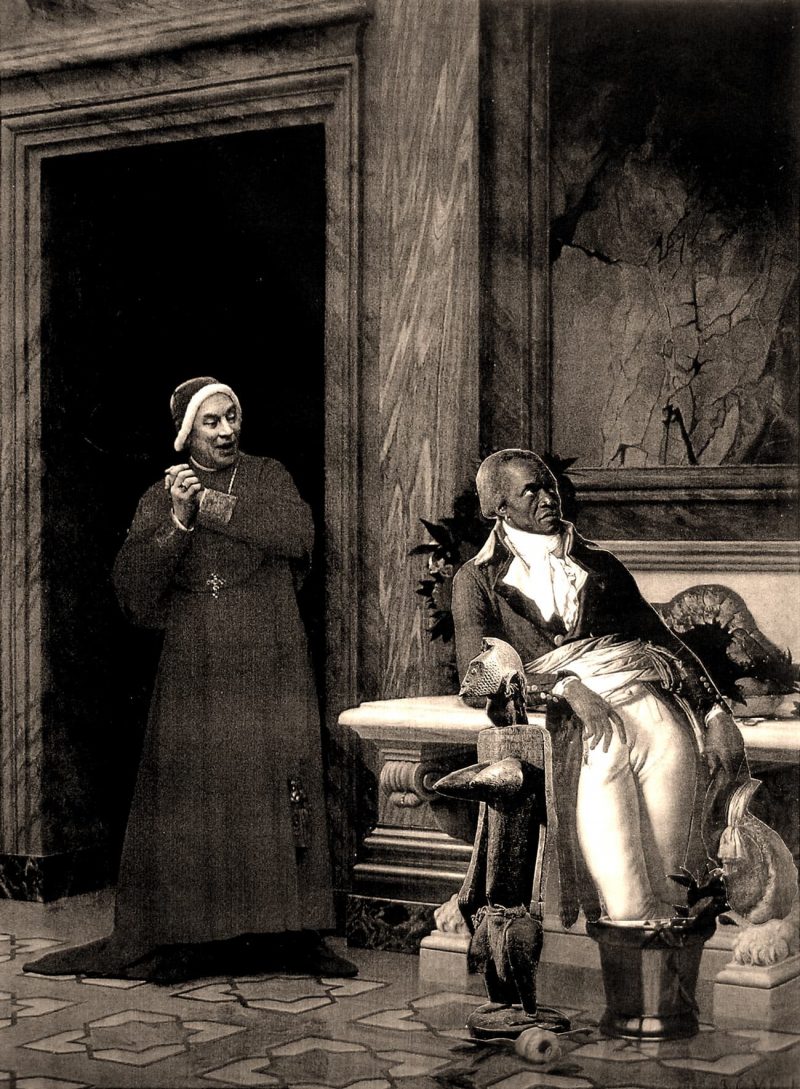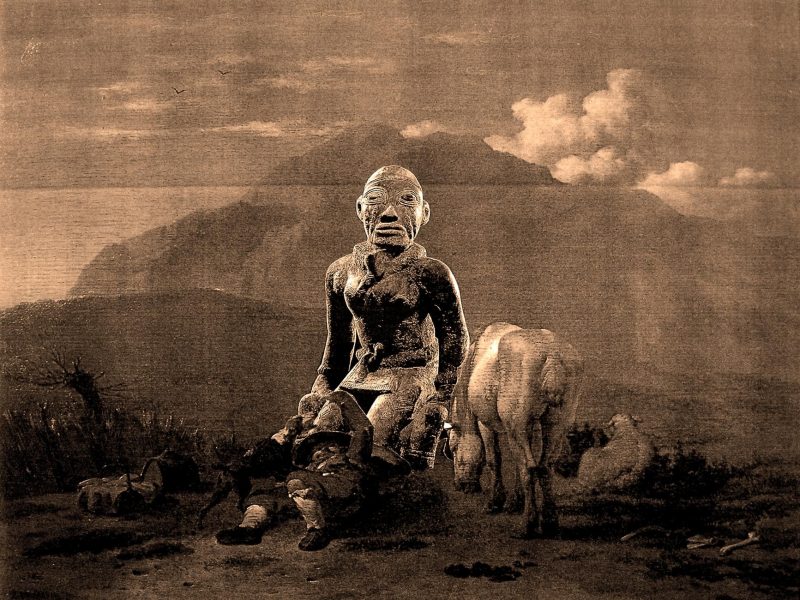Morgan Santander, El Tuito, México & Savannah, USA.
BEYOND RECONSTITUTION. Collages
by Morgan Santander
Artist Statement:
Beyond Reconstitution is a dialogue about culture, both present and past. Images from my current work are meant to break down our pre-conditioned perception of cultural and historical hierarchies. The work challenges our accepted social environments and norms. My work manipulates and disrupts our limited and relative historical perception. We know historical perception has always been manipulated and altered to favor the status quo of those in power. Traditional pictorial passages in Beyond Reconstitution are disrupted and reconfigured to create new and meaningful narratives. The work thrusts our knowledge of the world onto the realm of the beyond. With the dawn of our millennium upon us, we find ourselves inhabiting a world where our existence embarks on, and reflects upon, a tenebrous sense of survival. We are living a moment of transit.
Beyond Reconstitution is where space and time converge to produce complex figures of difference and identity. In this new world order, the beyond, we find ourselves suspended within a cascading flux of cultural and historical exchange. Disjointed fragments from these exchanges mold and constitute our understanding of the world. They influence our perception of representation, or misrepresentation. Once the original is altered within the mind’s eye, can it ever be re-perceived within the author’s or history’s original restraints or jurisdictions? Once the familiar turns strange nothing remains the same. Must the unfolding dialogue on culture, history, and society, be deconstructed and/or restaged in order that it be revitalized and brought to the forefront of our self-understanding?
Originally from Mexico, Morgan Santander grew up in Wales and California, earning a B.A. in Painting from the University of California-Berkeley and an M.F.A. in Painting from the University of Chicago. He has been a professor of Painting at the Savannah College of Art and Design since 2001 and has exhibited his work internationally.
AFTERTIME. The Collages of Morgan Santander
Essay by Bertha Husband
“Beautiful as a chance meeting on dissecting table of sewing machine and an umbrella.”
– Comte de Lautréamont, 19th century. Quoted by André Breton
Successive generations of artists have sought to enrich their work with layered meaning and new connections inspired through obscure juxtapositions. Taking Lautréamont’s poetic phrase as a point of departure, the Surrealists in the 1920s sought to create an art of collage and photomontage in which objects were freed from their contexts to develop new relationships. It is constantly reiterated, by those who believe that nothing can change the status quo, that the Surrealist experiment failed. To prove this, they point to the appropriation of collage techniques by market advertising. But even appropriated, the shadow world within the harmless-looking Surrealist games may contain the dangerous possibility of rebellion, a prophetic future that only awaits the transformation of social and
economic power relations to spring into being.
In this collage series, Morgan Santander limits the objects to two main sources. Black and white photocopies of European paintings from the Colonial period (16th century to late 19th century) provide a context or space into which his other chosen source of objects, black and white reproductions of ancient American, Asian and African sculptures, are inserted. With these sculptures, we take a cut,
a detour – or détournement -through the space.
There is an idea central to the ideologies of those who wield power that life without classifications would be unintelligible and lead to chaos. But categories are always a prison for the categorized and inevitably produce hierarchies and stereotypes. This is as true for objects and art forms as it is for the natural world of animals, plants and human beings. Cut free from the context of their original existence, these sculptures from different eras and continents invade the European bucolic landscapes, small interiors or historical scenes, in small groups or large armies where they cavort orgiastically and playfully, sometimes replacing the faces of the European actors with their own fabulous masks.
There is humor here, too, one that results not only from the absurdities of these newly created worlds, but also from the apparent lack of awareness of the European fiqures who are thus imposed upon. Peasants make haystacks and drive cattle, bourgeois men sit at tables, all are oblivious to the strange, incongruous figures within their space. Jarringly, they seem to have become phantoms where they once ruled.
Although Santander’s collages are later digitalized, it is important to know that they were originally created with the traditional pre-computer technology of cutting and pasting by hand with scissors and glue. While preparing to write this essay, I borrowed his files of images to play with, and I found it difficult to restrain myself from wanting to introduce other elements and media. But Santander is a purist. Only collaged paper is used in the collages, and he refrains from anything but oil paint in his paintings. Although these collages stand alone as art works, they may serve as monochrome value sketches to be used as a basis for a later series of paintings.
It occurs to me as I continue looking at the collages that this old European world has gone. With this playful occupation by sculpted figures from the past (and, on occasion, Santander introduces postmodern sculptures from the present into the mix), a rarified future is intimated, a space only for pleasure devoid of the drudge of work, the fears of repression and the tediousness of the accumulation of wealth. “The true space of pleasure,” wrote Henri Lefebvre, “which would be appropriated space par excellence, does not yet exist; even if a few instances
in the past suggest that this goal is in principle attainable, the results today tall short of human desires.” But these collages, like all the best artwork, make the world a stranger place and challenge our commitment to the “reality” created through complicity.
“When two objects are
brought together,
no matter how far apart
their original contexts
may be, a relationship
is always formed.”
– Guy Debord, 1950s.
“Disparate objects then
sutured together by their
close proximity conjure
new meanings as part of a
hermeneutical narrative.”
– Michael Piazza, 1980s.

